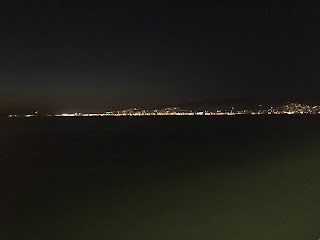I don't really have enough to say about this to make this a long post, but it was one of the highlights of the trip, so it's getting its own post.
On one of the days we were looking at roads, we stopped in this town and a gentleman told us they had an inscription set up in one of the town squares, for lack of a better phrase, but he didn't know what it meant. He led us to it, and it turns out it was written in Latin and Greek, except the Greek inscription was never completed.
(I was happy the Latin one got completed, because I understand more Latin than ancient Greek. Not that I could tell you what it actually said, but I recognized the words. Some of them. I know what
fortissimo and
pontifici maximo mean, anyway.)
Anyway, while we were there and the professors were trying to decipher the inscription, a group of people from the village all came to watch and see what was going on. It turns out that no one in the village knew what the inscription meant, because, like average Americans, average Turks don't read Greek or Latin, so they were all curious to know what it meant.
To me, this was a highlight because it was so fascinating to see how people interact with a piece of history in their own back yard. In America, we really don't have that kind of history just lying around for us to pick up. I'm not even talking about ancient history, which America doesn't even have - just history in general. For example, if you come out to the west coast and see some of those totem poles here and there, I can just about guarantee you that they're replications or pieces of art produced by contemporary artists. Any totem poles made in history will be in a museum somewhere.
Of course totem poles don't have the same endurance as stonework from Ancient Rome (few things do), but it really impressed on me that Americans don't get many chances to see and touch our history in everyday life. Certainly we have our museums (and I am not, in ANY WAY, discrediting the importance of museums - they also play an important and irreplaceable role), but I don't think most Americans make museums a part of their everyday life. The people in this village, however, have a piece of history as part of their town, and they were curious enough to learn more about it, if they could.
I don't yet know what I've learned from that - I'm still thinking it over. But it certainly gives me a lot to think about as I prepare to teach history (you know, if I survive grad school).
It also gives me some ideas for sequels to the
Quest for Rinaria, maybe explaining what happened to the treasure the pirates found... although, so far they're just ideas. But, if I ever do come up with a sequel for that, now you know where it will have come from!
P.S. No pictures, because I don't think I'm supposed to share pictures of inscriptions we found outside of Ephesus.


























